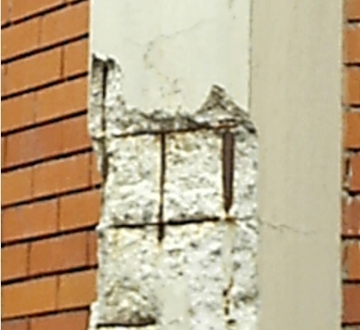Storage silos for wood shavings at Molteni & C. in Giussano (MB)
Via Rossini n.50 Giussano (MB) - 20833
Restoration of deteriorated structural parts of the silo for storage of wood shavings at Molteni & C. in Giussano
The silo for storage of wood shavings is part of the industrial history of Brianza district. The development of the industry related to the production of furniture, widespread north of Milan, has strongly characterized these territories. The silos for storage of wood chips are elements identifying this industrial presence. Factories, either small or large, built in fact these elements designed for the storage of wood waste that, accumulated during warm periods, was then used during the winter to feed the heating systems and heat production departments. When crossing Brianza district by car, it is easy to recognize these structures, some of them made of metal sheets, some others of bricks and a lot of them in exposed concrete. They are part of the urban landscape and witness the typical industrial history of this part of Lombardy region.
The restoration involved the silos of Molteni & C. S.p.A. in Giussano, built in 1962. They have a capacity of about 100 cubic metres and are placed close to the heating system that heats the entire factory. The wood shavings, collected in processing departments, are conveyed through ducts to the upper portion of the silo consisting of a separation chamber that allows the deposit of wood chips inside it. The deposited chips are then sucked in from the basis, chopped and brought to the heating plant to feed it. In particular, the silos were constructed with an exposed reinforced concrete outer frame and infilled with exposed brick faces. Inside, a reinforced concrete structural plaster was built connected to the frame and brick face. Over the years the frame showed the typical phenomena of deterioration of exposed reinforced concrete structures. The restoration involved therefore the removal of all the broken parts with a 2500-bar hydro-demolition. At a later stage, all the iron reinforcements were repaired; the plaster was reconstructed with suitable fiber-reinforced mortar and the reinforcements were improved with stainless steel rods. The restoration was preceded by a phase of analysis of the cement carbonation state and concluded with laboratory tests on all materials used.
By Eng. Francesco Molteni, Molteni Enrico & C
Photographs: Molteni Enrico & C

















